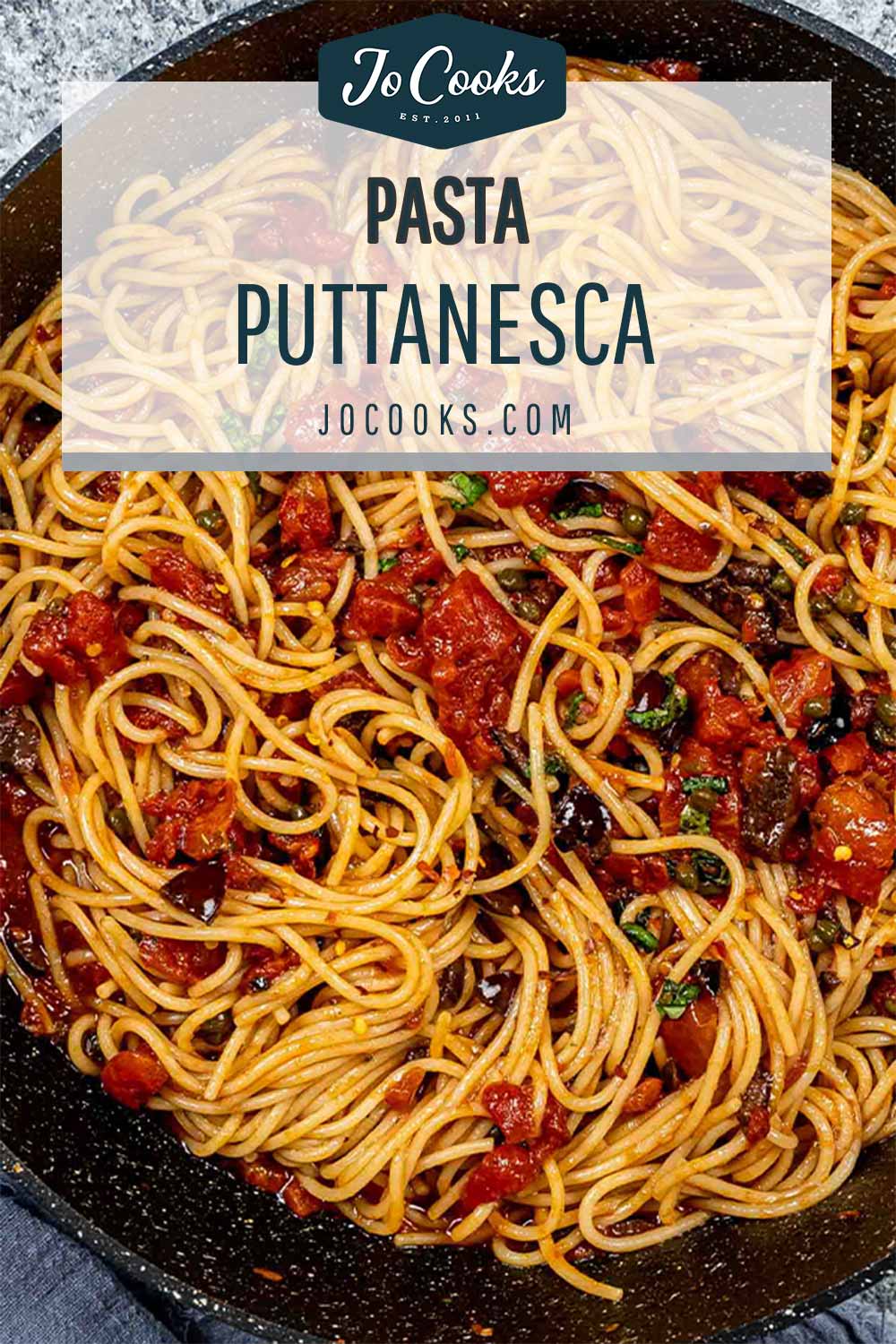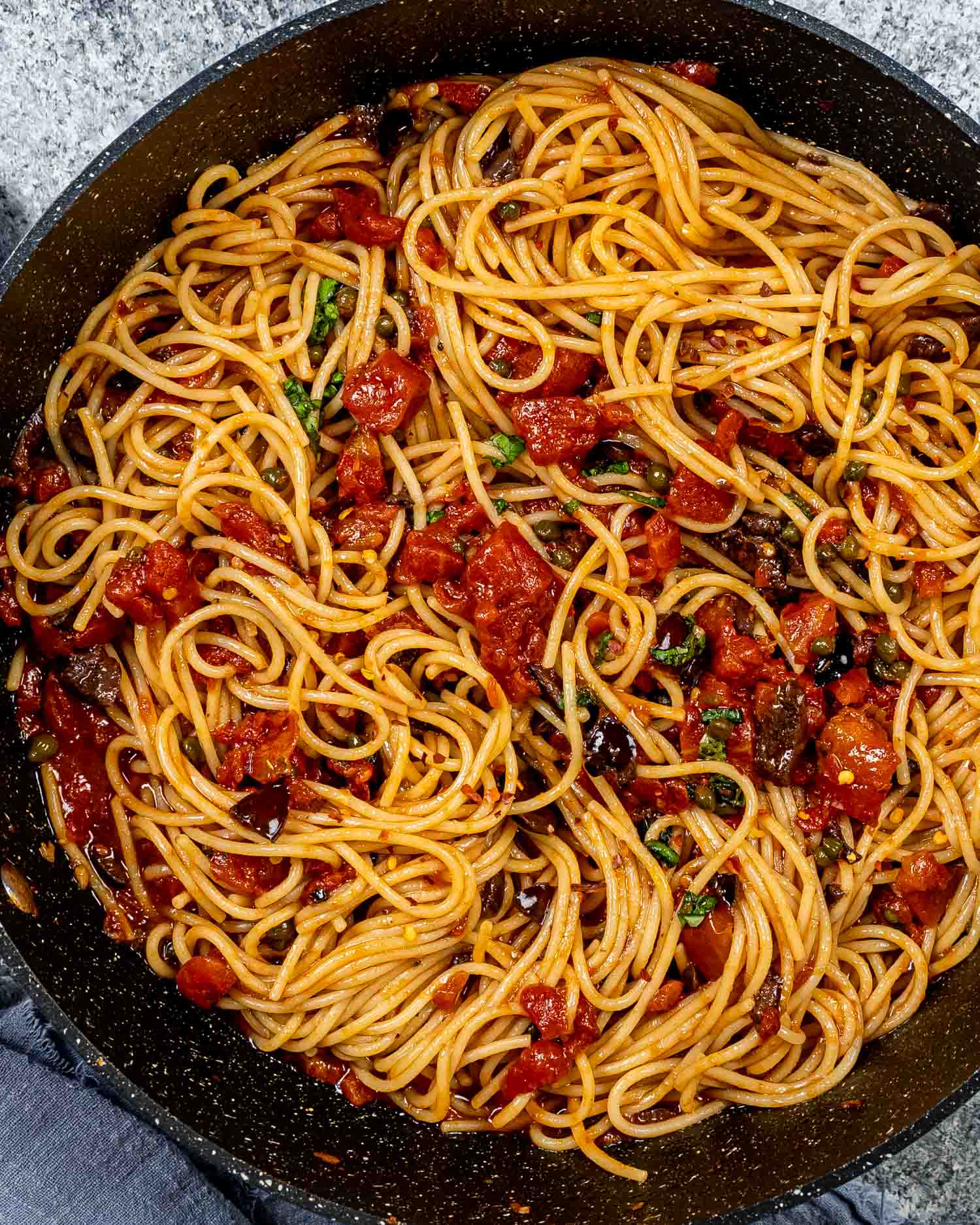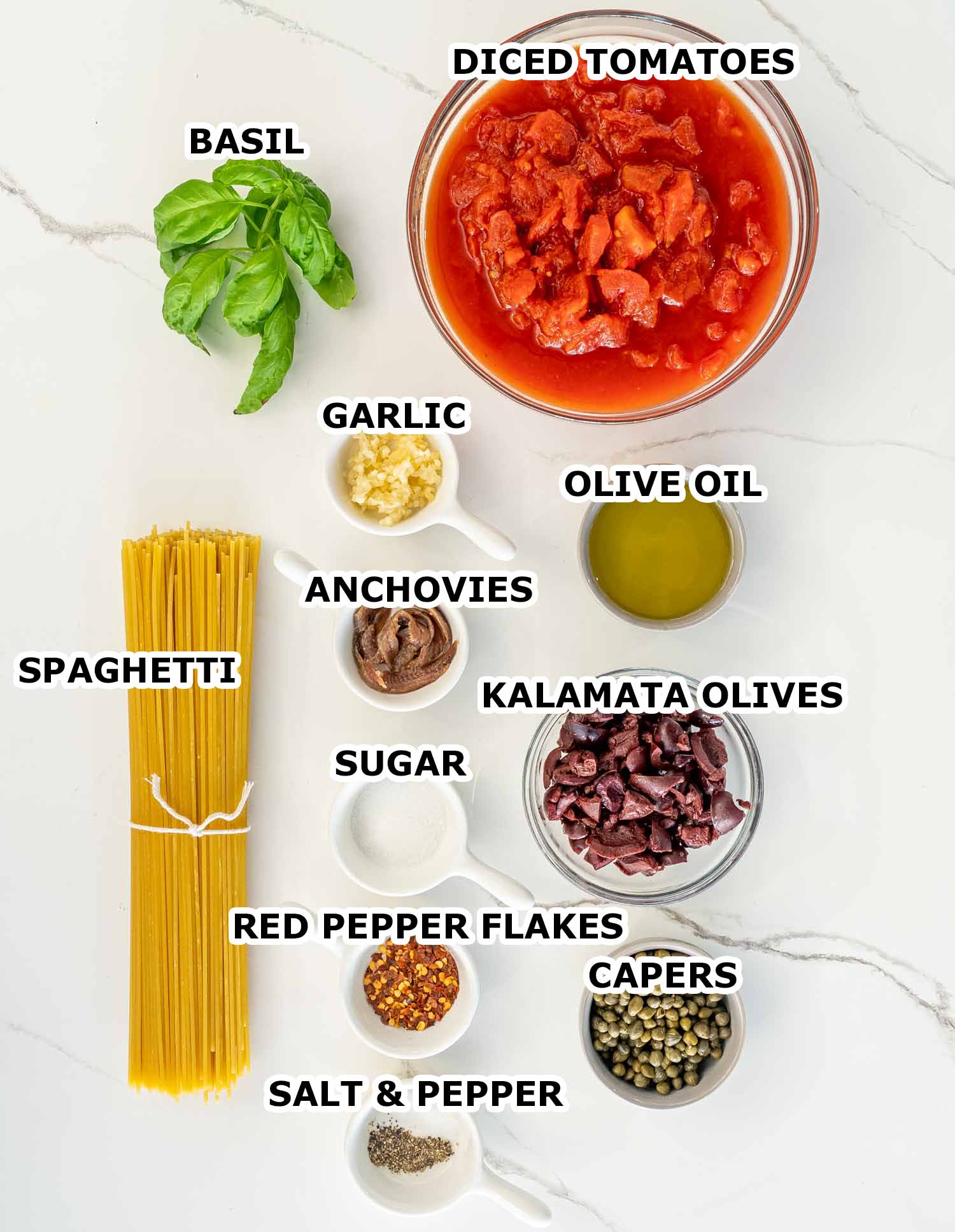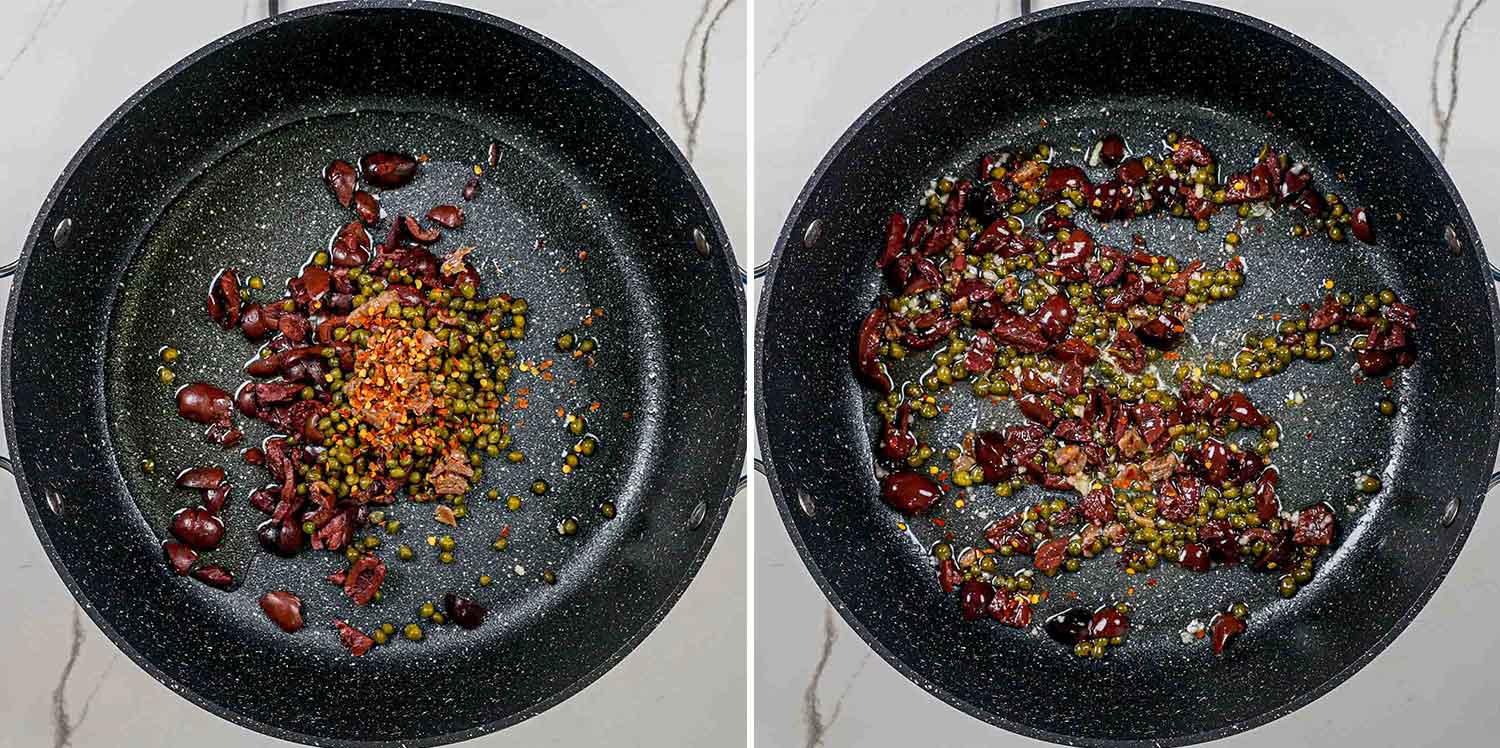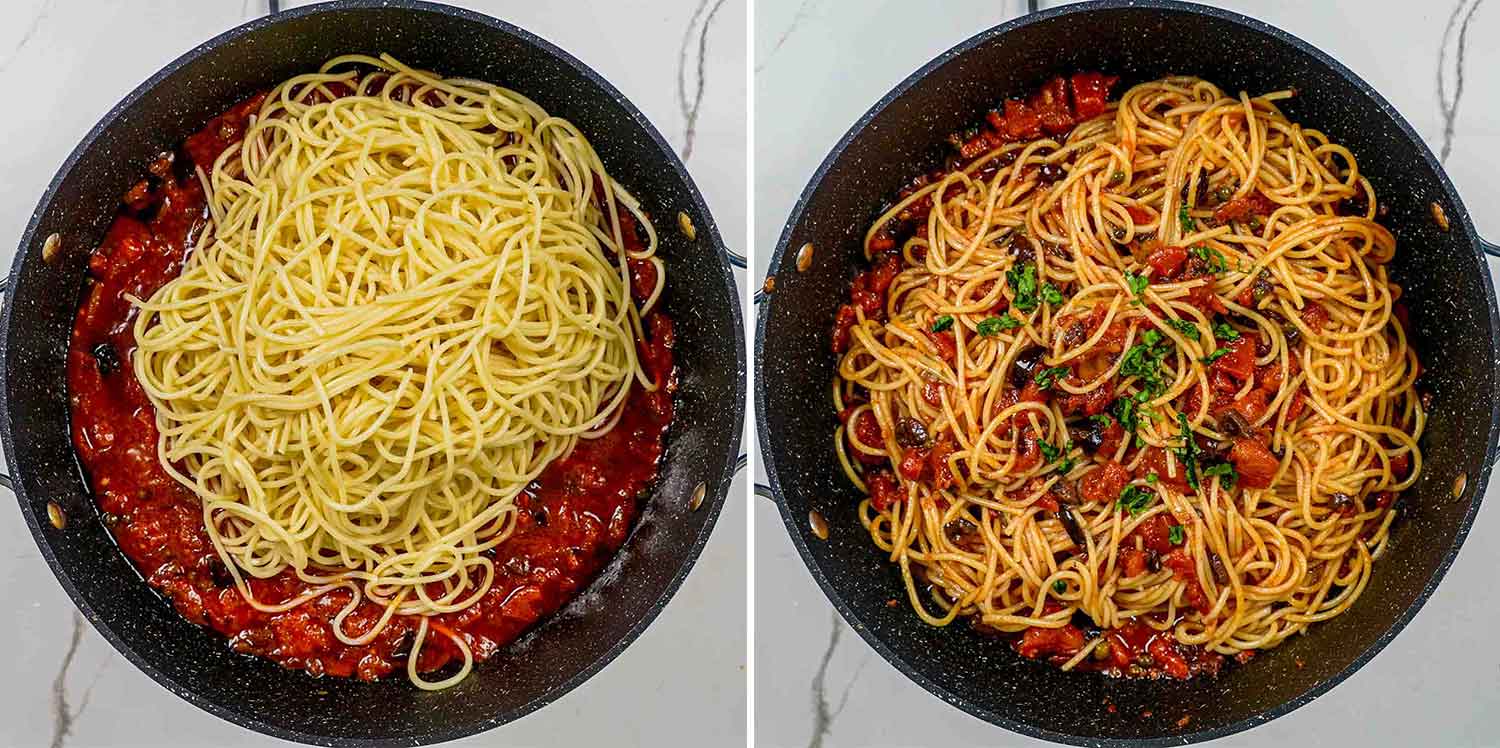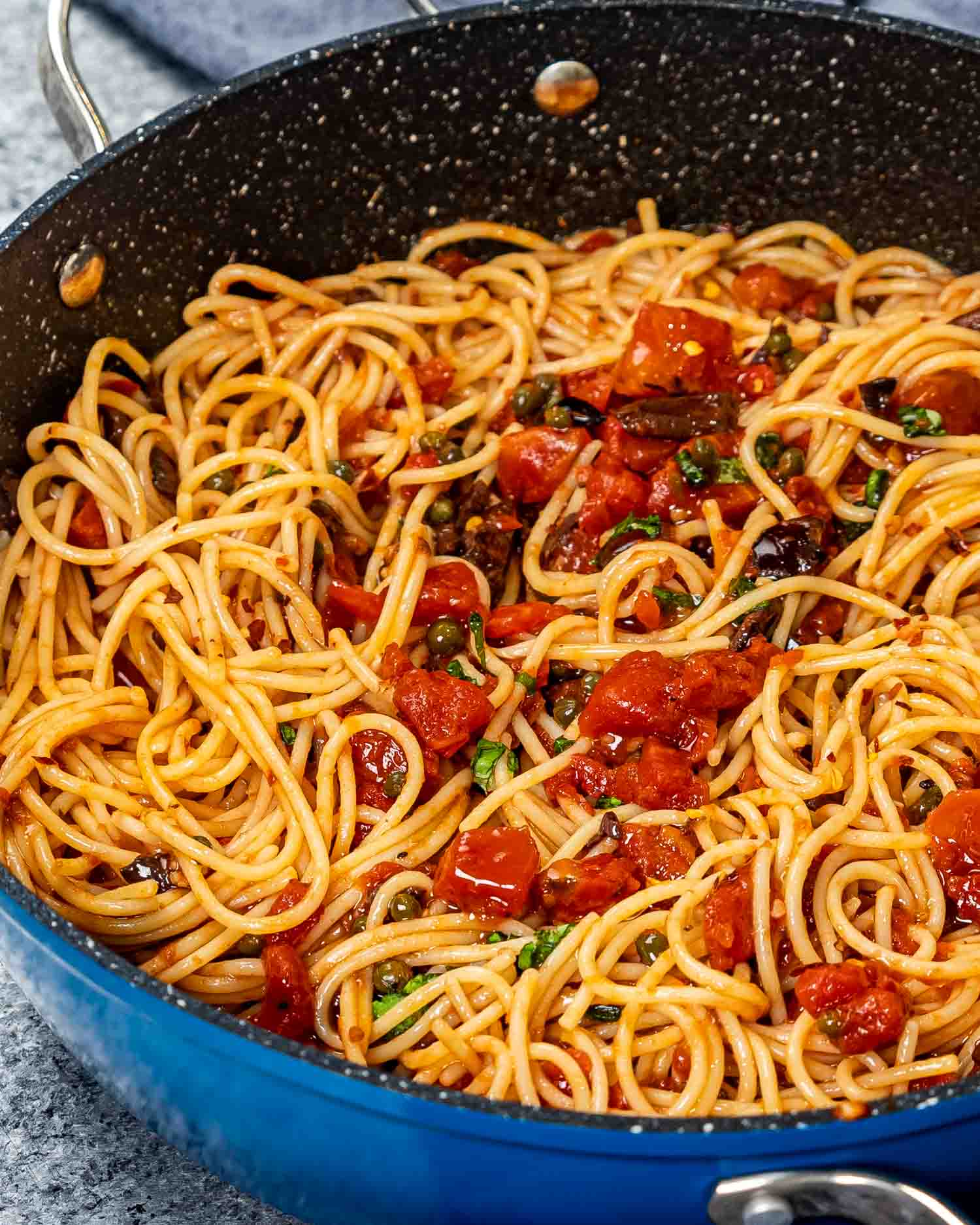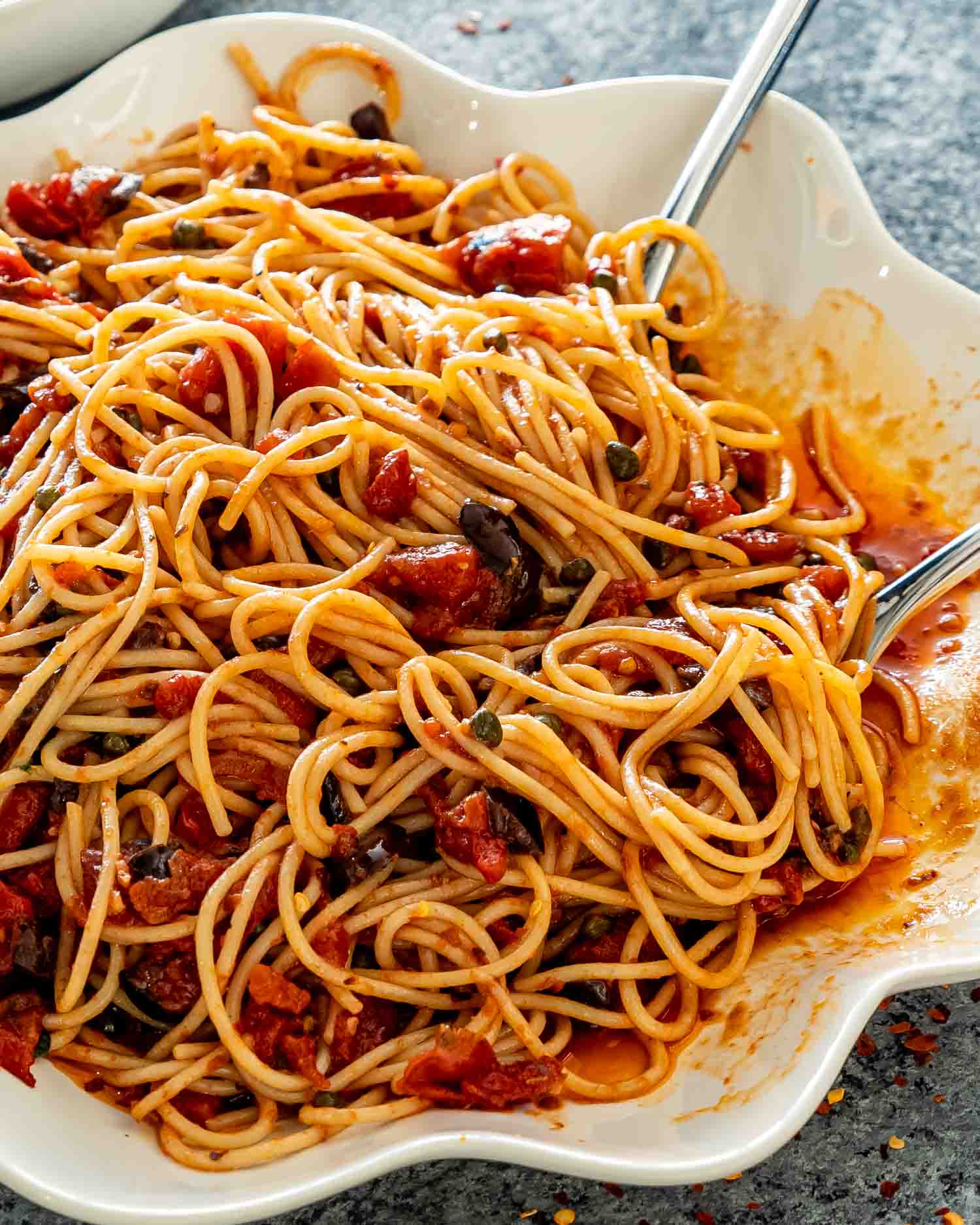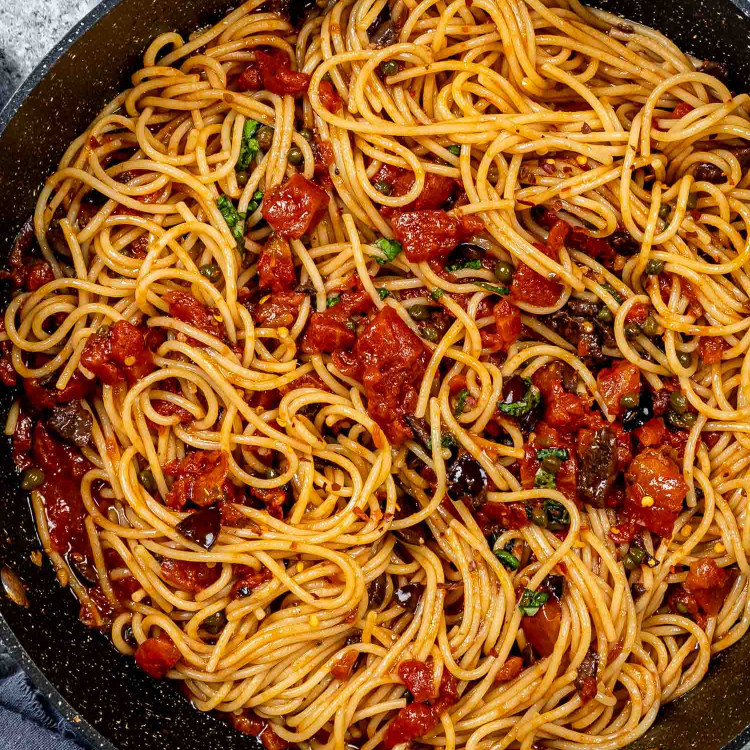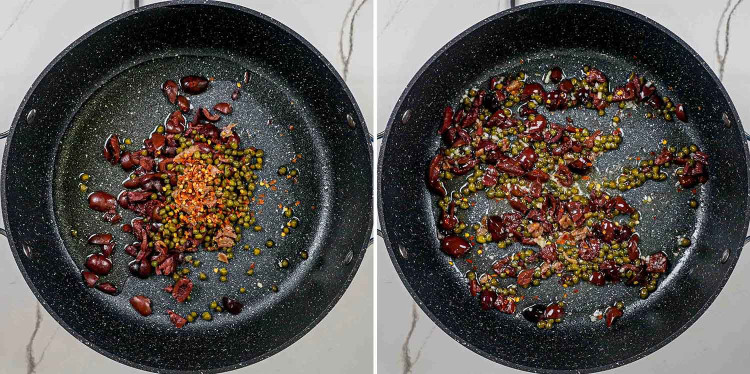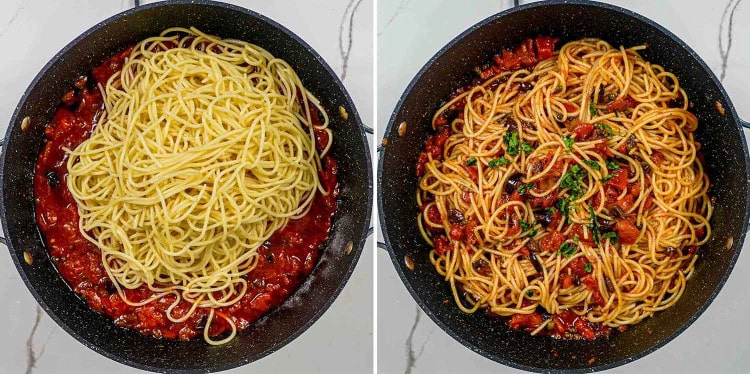What Is Pasta Puttanesca?
Also, known as spaghetti alla puttanesca, pasta puttanesca is a classic Italian pasta dish that was invented in the mid-20th century in Naples. It’s typically made with spaghetti, but any type of pasta can be used. However, the sauce is pretty much always made with canned diced tomatoes, fresh garlic, extra virgin olive oil, kalamata olives, capers, and anchovies that are simmered together for just a few minutes before being tossed with noodles. That being said, as with any classic dish, you will find different variations of pasta puttanesca in different regions of Italy. For example, the Neapolitan version doesn’t include anchovies. And different spices are sometimes added. But the dish itself is always based on salty savory ingredients that create lots of bold deliciousness. The recipe I’m sharing here is an authentic version of this classic. It’s based on the principles of a true puttanesca that you would find in Italy. However, this dish is very flexible, so feel free to customize the recipe if you like. For example, by omitting the anchovies if you prefer or adding more dried red chilis.
Spaghetti – Puttanesca is typically made with noodles so I used spaghetti, but any type of pasta will work. Even penne, farfalle, and rigatoni are options. Olive Oil – You want to use extra virgin olive oil. Ideally, Italian and of decent quality for the most flavor. Garlic – Fresh minced garlic is always the best choice. Jarred store-bought garlic sometimes has an odd sour taste after it sits in the fridge. Kalamata Olives – A type of Greek olive commonly used in Italian cuisine. You can use black olives if you can’t find kalamata olives. Capers – They are very salty like olives, but capers are actually tiny little flower buds. You will find them sold in jars near the olives at the market. Anchovy Fillets – Adds a lovely salty savory touch to the pasta. However, you can omit this ingredient if you like. Red Pepper Flakes – Just a dash adds the perfect touch of spice to the dish. Diced Tomatoes – You’ll need a large can of diced tomatoes. They are used to make the sauce. Sugar – A pinch of sugar is used to balance out the saltiness of the olives, capers, and anchovies. Sugar is also added to cut out some of the acidity from the tomatoes. Seasonings – Salt and pepper are used as needed to season the dish. Basil – Used to garnish the dish and add a layer of wonderful fresh herb flavor. You can also use fresh parsley.
It only takes 3 easy steps to make this unbelievably flavorful dish. Just like my Cacio e Pepe recipe, all you have to do is boil some noodles, whip up a simple sauce, and toss them together! From start to finish, this is a 20-minute meal! There is no pasta puttanesca without pasta! So let’s get the spaghetti cooking! First, bring a well salted large pot of water to a boil and then cook the pasta according to the package instructions or until it reaches al dente. Then reserve one cup of the pasta water and drain the rest. Now, set both the noodles and water aside. You should begin this step while the pasta is cooking. To start, heat the olive oil over medium heat in a large skillet. Then add the garlic, olives, capers, anchovies, and red pepper flakes to the skillet and stir. Now, cook the mixture for 30 seconds to a minute just until it’s fragrant. Next, add the diced tomatoes along with the sugar, salt, black pepper, and about ¼ cup of the reserved pasta water and bring the mixture to a boil. Then reduce to medium-low heat and simmer the puttanesca sauce for 10 minutes. After the sauce has simmered for a bit, add the cooked spaghetti to the skillet and then toss everything together until all the noodles are fully coated. At this point, if the sauce is too thick or the dish seems too dry, just add a bit more pasta water to thin it out. Then serve immediately with some fresh basil to garnish, parmesan cheese, and Easy Focaccia if you like.
What Does Puttanesca Mean In Italian?
Puttanesca literally translates to “in style of the whore”, but historians don’t truly know how the dish got its name. Some say it got its name because it was made by prostitutes to lure clients in with its delicious smell. But many Italians believe that isn’t the case and it got its name from someone using profanity to describe the dish and what was meant to mean, “I just tossed a bunch of crap together from the cupboard and put it in a pan”, turned into a different translation over the years.
What Can I Use If I Don’t Have Anchovies?
There are several things that can be used in place of anchovies. If you aren’t trying to make the pasta puttanesca plant-based, canned tuna is a great substitute. However, if you want to omit any type of fish altogether you can simply just use more olives or capers if you like. You could even replace the anchovies with mushrooms.
Storage
Leftover pasta puttanesca will keep in the fridge for up to 5 days in an airtight container. To reheat, sprinkle it with a tablespoon of water to add some moisture, and then pop it in the microwave on medium power for a few minutes. You can also reheat it in a pan on the stovetop if you prefer. It’s also super yummy cold too. However, it does not store well in the freezer.
Other Delicious Pasta Recipes To Try
Creamy Avocado and Spinach Pasta Shrimp Scampi Classic Spaghetti and Meatballs Pesto Shrimp Asparagus Pasta Creamy Garlic Butter Spaghetti Pasta Pomodoro
